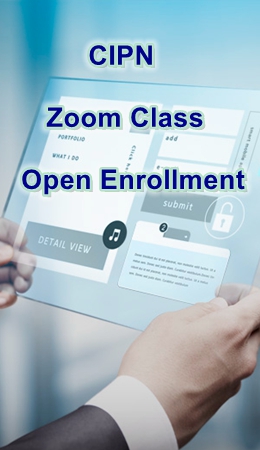Certified International Category Manager (CICM)
PROGRAM INTRODUCTION
The procurement and contracting profession is in the midst of unprecedented change. The transformation is being driven by globalization in consumer and supplier markets, as well as by rapid technological advances that facilitates procurement on any scale.
This course introduces Category Management and its relationship to Procurement and Contract Management. Delegates who complete this course will acquire the necessary category management skills to:
The procurement and contracting profession is in the midst of unprecedented change. The transformation is being driven by globalization in consumer and supplier markets, as well as by rapid technological advances that facilitates procurement on any scale.
This certification course focuses on applying purchasing/procurement category management tools to sourcing success, including e-commerce and internet strategies; supply-chain management technology, including eRFx systems, auction sites and bid optimization; strategic sourcing initiatives; offshore and international sourcing, and much more.
This course provides guidance on supplier relationships and partnerships, opportunities for cost reduction, electronic and paperless management, global sourcing opportunities and more.
At the completion of the course, delegates take the 80 multiple choice questions and upon passing, will be awarded ‘Certified International Category Manager (CICM) certification from the International Purchasing and Supply Chain Management Institute.
PROGRAM OBJECTIVES
This course introduces Category Management and its relationship to Procurement and Contract Management. Delegates who complete this course will acquire the necessary category management skills to:
✓ Assure sourcing and on-time delivery of best priced best quality materials to maximize production capacity
✓ Find the right supplier and effectively execute supplier relationship management for win- win partnerships
✓ Find solutions to sourcing bottlenecks and risks to ensure on-time delivery of materials
✓ Be equipped on streamlining and optimizing the whole business process
✓ Master advance cost techniques translating to reduction of waste and inefficiency of supply chain
✓ Learn how to encourage suppliers early in new product or service development and foster innovation
MODULES
1. Introducing category management
Category management explained
The relevance of category management today
The impact of technology
Our love affair with cheap
Unlocking value from the supply chain
Segmenting the spend; identifying the categories
The potential benefits of category management
Surely someone has already thought of this
2. The principles of category management
The three foundations of category management
The four pillars of category management
3. The stages of category management
A circular process
Moving through the five stages
Reviewing process
Realizing the benefits
The full process
Knowing what to leave out
Process duration
Before you start
4. Stage 1: Initiation
Kicking off the process
The initiation toolkit
Scoping the category project
Opportunity analysis
Securing the executive sponsor
Recruiting team members
Situation, target, proposal
The team charter
Stakeholder mapping
Communications planning
Gaining first insights into the category
Defining the business requirements
Project planning
Securing quick wins
5. Stage 2: Insight
Introduction to data gathering
The insight toolkit
Convincing the suppliers you mean business
Internal data gathering
Supplier data gathering
Researching the market and potential new markets
Understanding the supplier’s pricing approach
Determining where the value is added in the supply chain
Developing a cost vs price breakdown
Identifying current vs future technology
External environment analysis
Understanding market competitiveness
Determining potential sources of leverage
Understanding how the supplier views the relationship/account
Portfolio analysis with supplier preferencing
6. Stage 3: Innovation
Determining the future sourcing strategy
The steps towards innovation
Summarizing the analysis
Strategic option generation
Strategic option evaluation and selection
Building the chosen option
Risk and contingency planning
High-level implementation planning
Creating the strategic source plan
Source plan sign-off
7. Stage 4: 7Implementation
Turning the future sourcing strategy into reality
Turning a strategy into reality
Detailed implementation planning and project management
Managing change
Contract planning
RFP/RFQ/tender process
E-auctions
Supplier selection
Negotiation
Finalizing the legalities
8. Stage 5: Improvement
The process of continuous improvement
Focusing on improvements
Lessons learned review
Supplier relationship management
Attracting innovation, breakthrough and ongoing value-adding initiatives
Ongoing alignment with business requirements
Ongoing market analysis
Determining when to start the process again
9. Making category management happen
Before you start
Executive endorsement for a category management program
Program governance
The program plan
Benefits measurement and tracking
Program reporting
The right capability
Program communications
E-enabling category management
10 What the future holds
Future implications for purchasing
Certifications
- Certified International Commercial Contracts Manager (CICCM)
- Certified International Professional Negotiator (CIPN)
- Certified International Trade, Shipping & Logistics Professional(CITLP)
- Certified International Sourcing Manager (CISM)
- Certified International Warehouse and Inventory Manager (CIWIM)
- Certified Supplier Quality Manager (CSQM)
- Certified Manager of Production Operation (CMPO)
- Certified International Contract Cost/Price Analyst (CICCPA)
- Project Management Professional in Procurement and Contracting (PMPPC)
- Certified International Procurement Auditor (CIPA)
- Certified International Category Manager (CICM)
- Certified Operational Business Accounting & Finance - Procurement (COBAF-P)



